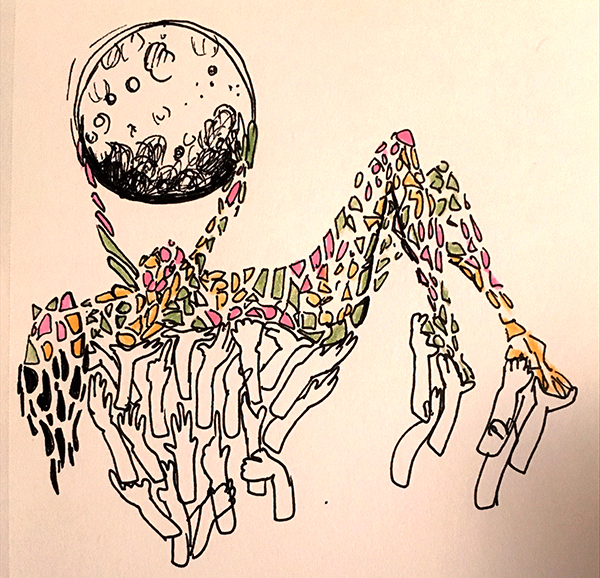Rethinking My Dance Education
BY EMMALY WIEDERHOLT
When I went to college for a BFA in Ballet at the University of Utah from 2004 to 2007, my technique requirements (to the best of my memory) were the following: ballet and pointe every day for every semester, modern dance twice a week for two semesters, jazz dance twice a week for two semesters, and character dance twice a week for two semesters. While my BFA was specifically in Ballet and not in Dance more generally, the same basic recipe for training dancers has continued in many of the elite dance programs around the country for decades.
While in college, I also discovered an Afro Brazilian dance class at a community center downtown. I’d take it once every few weeks when I wasn’t too bogged down with homework or too busy rehearsing for a show. I loved it. Aside from the atmosphere being a complete inverse from the strict hierarchical environment in the dance department, it was also a fun challenge to attempt the complex rhythms and very different ways of moving my body. And as much as I loved the ballet class accompanists with their piano riffs on musicals and ballet variations, the drumming was a more visceral throb than the calm chords in ballet class.
I’m not saying that ballet is ethereal and African forms are of-the-earth, because I think that’s an oversimplification that does neither justice. What I am saying is the community Afro Brazilian class complemented and augmented my training in ways I didn’t know how to appreciate at the time.
Fast forward about 10 years, I moved to Santa Fe in late 2014 after years of pursuing contemporary dance in the Bay Area. I heard about a Haitian/West African class in town and was immediately excited to give it a try. I ended up loving it. Attending the class two to three times a week became as much a part of my weekly dance regimen as going to ballet class. To this day, I find myself joyfully returning as often as possible to the Haitian/West African class.
I fell in love with ballet early and deeply, and I still love it, though of course that love has evolved. But growing up in the ballet world isn’t the most joyful of experiences. That’s not to say that other dance forms aren’t highly competitive and rigorous, but there’s a specific culture in ballet of restraint and austerity that does not lend itself to loving one’s body or feeling encouraged toward confidence. I’m sure the culture around other dance forms – including non-Western dance forms – isn’t perfect, but wouldn’t a young dancer benefit from having exposure to many modes of expression in order to explore what forms they feel most empowered and excited by? What are young dancers training for if not to find a range of expression and agency?
The other, and perhaps more important, reason young dancers should be exposed to and required to train in multiple forms from many areas of the globe is for the simple reason that the Western focused training I underwent is problematic. There is no objective argument that ballet or modern dance trains pre-professional dancers better than any other form. This division of Western forms versus “ethnic forms” has an air of racism to it. Ballet and modern dance are as much a product of society, history, and culture as any other dance form, as has long been researched and documented. However, it is only in the past few years that some college dance programs have begun to rethink their curriculums and hire tenure-track dance teachers who specialize in dance forms other than ballet and modern. Why are these college dance programs changing their tune now?
From my perspective, the short answer is George Floyd. The Black Lives Matter protests of 2020 made institutions take a hard look at their programming, resulting in several dance programs seeking to hire tenure-track Afro diasporic and other previously considered “ethnic” dance teachers. These same teachers are now teaching required courses, as opposed to electives. Of course, there are plenty of dance training programs still entrenched in Western preeminence, but I wanted to take a close look at this opening of college dance curriculum, particularly toward Afro diasporic dance forms, and to talk to those who are at the forefront of making this shift.
Over the next several weeks, Stance on Dance is publishing interviews with Afro diasporic dance professors in colleges across the US. Their perspectives make clear that while some college dance programs are initiating curriculum requirements other than Western classical dance, there are still cultural and institutional hurdles in achieving equity.
I get excited when I see dance institutions questioning rather than reinforcing the status quo. Though I sometimes lament what my dance training could have been had I grown up 20 years later, I’m glad to see these shifts happen, and I am thankful for the small exposures I have had in other dance forms. It continues to enrich and excite me. I hope the dancers of tomorrow persist in fueling this more equitable approach toward dance education and scholarship, and in doing so, I look forward to watching the dance world reshape itself globally and culturally.

Illustration by Camille Taft
~~

2 Responses to “Rethinking My Dance Education”
Yes, such a good point! Thanks Nikhita!
With these shifts in creating a culturally inclusive and diversified education of dance, comes the need to formalize Afro diasporic dance and, hence, the development of afro diasporic dance curriculums.
Comments are closed.